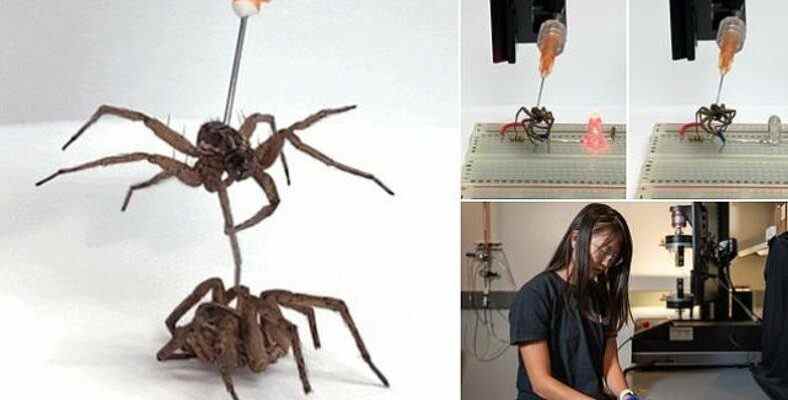Discovering that the hydraulic systems in spiders’ legs can hold objects many times larger than they are, engineers turned the twisted legs of a dead spider into a structure called a necrobot. As a result of the studies, it is aimed to reduce the amount of robotic waste.
Scientists continue to work on animals. Among the animals in which various experiments were made, of spiders legs, webs, and even themselves are not scary for some people, but quite scary for others. In past years spider webs and transforming vibrations into sound a new technical developed with this technique vibrations in the networks were turned into music.
arachnophobia In other words, a study was conducted to frighten people who have a fear of spiders even more. Faye Yap, an engineering graduate student, and her colleagues at Rice University and mechanical engineer Daniel Preston have jointly developed a method that turns dead spiders into mechanical grips, or robots.
Robots created from dead spiders are called “Necrobots”
Spiders’ legs have a structure that can grasp large, delicate and shapeless objects tightly and softly without breaking them. spiders, elongation for legs without muscles called the prosoma chamber or cephalothorax they move with a hydraulic pressure. Spiders have a feature that shrinks, sends internal body fluid to their legs and allows them to lengthen.
The team that conducted the study inserted a needle into the prosoma chamber, the curled leg of a dead spider, and using a sphere of superglue, they created a seal around the tip of the needle. Injecting even just a little bit of the needle activated the spider’s legs, and in less than a second, the legs began to move fully. Later, this necrobotic They attached the legs of spiders, called spiders, to an electric breadboard and used the legs of a dead spider to hold various objects and electronics, notably to move a block of polyurethane foam.
Spider was able to carry a spider as big as itself
Because spiders’ legs work with hydraulic pressure, when they die, the hydraulic system no longer works. The muscles in the spider’s legs become useless and the spider curls up. Spiders are biodegradable, so using them as robot parts robotics will reduce the amount of waste is being considered.
In studies, the legs of a dead spider are the same size as themselves. can carry the weight of another spider emerged as a result of experiments. Spider legs have also been found to be quite robust, as they can go through 1,000 on-off cycles before experiencing any wear and tear.
RELATED NEWS
No Spider Phobia: A Shiny, Black, Scary Spider Species Discovered in Miami
The researchers tried coating the spiders with wax and found that the reduction in mass over 10 days was 17 times less than that of the non-wax-coated spider, explaining that this means the uncoated spider retains more water within its body and means its hydraulic system can run longer.
Source :
https://www.sciencealert.com/necrobotics-the-creepy-field-of-science-that-is-using-dead-spiders-as-robots
